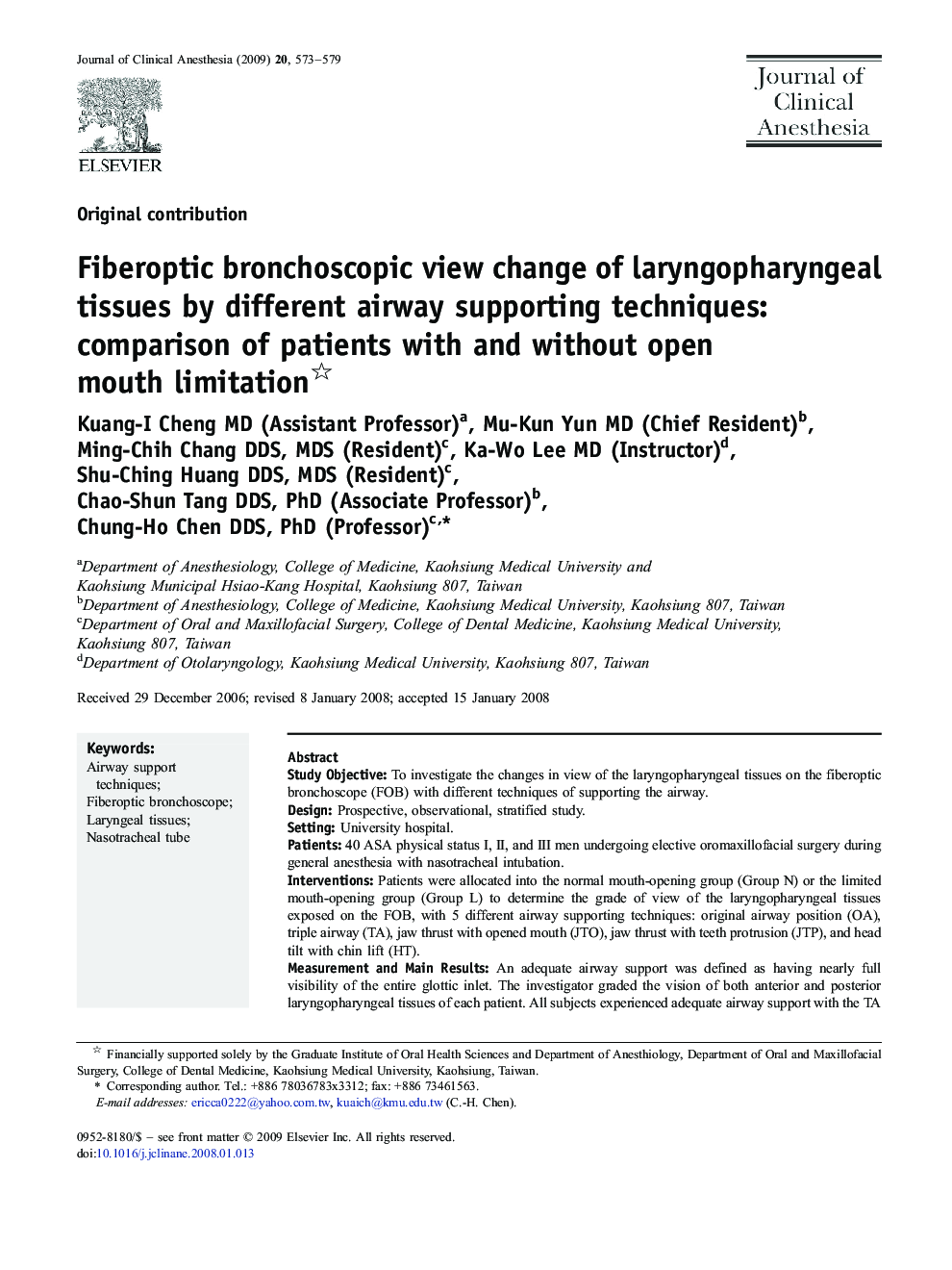| Article ID | Journal | Published Year | Pages | File Type |
|---|---|---|---|---|
| 2764089 | Journal of Clinical Anesthesia | 2008 | 7 Pages |
Study ObjectiveTo investigate the changes in view of the laryngopharyngeal tissues on the fiberoptic bronchoscope (FOB) with different techniques of supporting the airway.DesignProspective, observational, stratified study.SettingUniversity hospital.Patients40 ASA physical status I, II, and III men undergoing elective oromaxillofacial surgery during general anesthesia with nasotracheal intubation.InterventionsPatients were allocated into the normal mouth-opening group (Group N) or the limited mouth-opening group (Group L) to determine the grade of view of the laryngopharyngeal tissues exposed on the FOB, with 5 different airway supporting techniques: original airway position (OA), triple airway (TA), jaw thrust with opened mouth (JTO), jaw thrust with teeth protrusion (JTP), and head tilt with chin lift (HT).Measurement and Main ResultsAn adequate airway support was defined as having nearly full visibility of the entire glottic inlet. The investigator graded the vision of both anterior and posterior laryngopharyngeal tissues of each patient. All subjects experienced adequate airway support with the TA and HT airway supporting techniques. The TA airway supporting technique significantly moved the posterior laryngeal tissues more upward in Group N than Group L (P = 0.027). The JTP airway supporting technique provided adequate airway support for 14 of the 20 patients in Group N but only for two of the 20 Group L patients (P < .001).ConclusionBoth the TA and HT techniques provided adequate airway support for patients with and without limited mouth opening.
